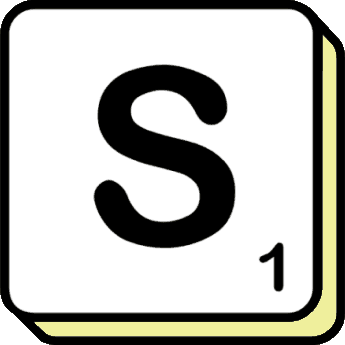A World Tour of Letters
Author: Brian Bowman
Date Published: 5 October 2023
Alphabets, the building blocks of written language, have an incredible history and diversity around the world. From the elegant curves of the Latin alphabet to the intricate characters of Chinese script, alphabets reflect the rich tapestry of human culture and communication. In this blog article, we'll embark on a captivating journey through alphabets used around the world, uncovering their history, unique features, and some quirky facts that make them truly fascinating.

The Latin Alphabet
Let's start with the most familiar alphabet – the Latin alphabet. Derived from the Greek alphabet, it is the writing system used for English and many other languages. Interestingly, the Latin alphabet has undergone numerous transformations over time, giving rise to different variations like the Cyrillic alphabet (used in Russia and much of Eastern Europe) and the Gothic alphabet (used by the Goths during the Middle Ages).
Funky Fact: The letter "J" was the last letter added to the Latin alphabet. It was originally a variation of the letter "I" and was used interchangeably until it became a distinct letter in the 17th century.
The Greek Alphabet
The Greek alphabet is one of the oldest in the world and has had a profound influence on the development of Western writing systems. It's known for its distinctive characters, including alpha, beta, and omega. Interestingly, many Greek letters are used as symbols in mathematics, science, and fraternity/sorority names.
Funky Fact: The word "alphabet" itself is derived from the first two letters of the Greek alphabet, alpha and beta.
The Arabic Alphabet
The Arabic alphabet, with its beautiful, flowing script, is used for writing Arabic, Persian, and several other languages. What sets Arabic apart is its right-to-left writing direction, which may seem unusual to those accustomed to left-to-right scripts.
Funky Fact: The Arabic alphabet has 28 letters, and it's written without vowels. Vowels are typically indicated with diacritical marks, making Arabic calligraphy a true art form.
The Chinese Script
Chinese characters, known as Hanzi, are one of the oldest writing systems still in use today. Each character represents a word or a morpheme, making it a logographic script. Chinese script is both fascinating and challenging, as it requires memorizing thousands of characters to become proficient.
Funky Fact: Chinese is one of the few languages that can be written vertically, from top to bottom, or horizontally, from left to right. The direction depends on the specific context and style.
The Devanagari Script
Devanagari is the script used for Sanskrit, Hindi, Nepali, and several other Indian languages. It's known for its flowing, decorative characters. One unique feature is the presence of a horizontal bar at the top of many characters, which is called the "shirorekha."
Funky Fact: The word "Devanagari" means "the divine script" in Sanskrit, reflecting its significance in religious texts.
The Korean Hangul
The Korean writing system, Hangul, is celebrated for its simplicity and phonetic nature. It was created by King Sejong the Great in the 15th century to increase literacy among commoners. Hangul's characters are formed by combining basic elements representing consonants and vowels.
Funky Fact: Hangul is the only script in the world whose invention can be precisely dated to a single individual, King Sejong.
The Hebrew Alphabet
The Hebrew alphabet is the script of the Jewish and Hebrew languages. It's read from right to left and is notable for its square-shaped characters. Interestingly, Hebrew lacks vowels as separate letters, similar to Arabic.
Funky Fact: Hebrew is a Semitic language, and its alphabet has had a significant influence on the development of other Semitic scripts, including Arabic.
The Thai Script
The Thai script, also known as Thai abugida, is used for writing the Thai language. It's a unique script characterized by its circular characters and diacritics that change the pronunciation of consonants.
Funky Fact: The Thai script has 44 consonants, 15 vowel symbols, and four tone marks, making it a bit more complex than it may initially appear.
Conclusion
Alphabets are not just tools for communication; they are windows into the rich history, culture, and linguistic diversity of our world. From the fluid elegance of Arabic to the logographic complexity of Chinese characters, each alphabet has its own story to tell. As we've journeyed through these alphabets, we've discovered the intricate details and fascinating facts that make them truly remarkable. Whether you're a linguist, a traveler, or simply curious about the world, exploring alphabets is a captivating adventure that unveils the beauty of human expression.
